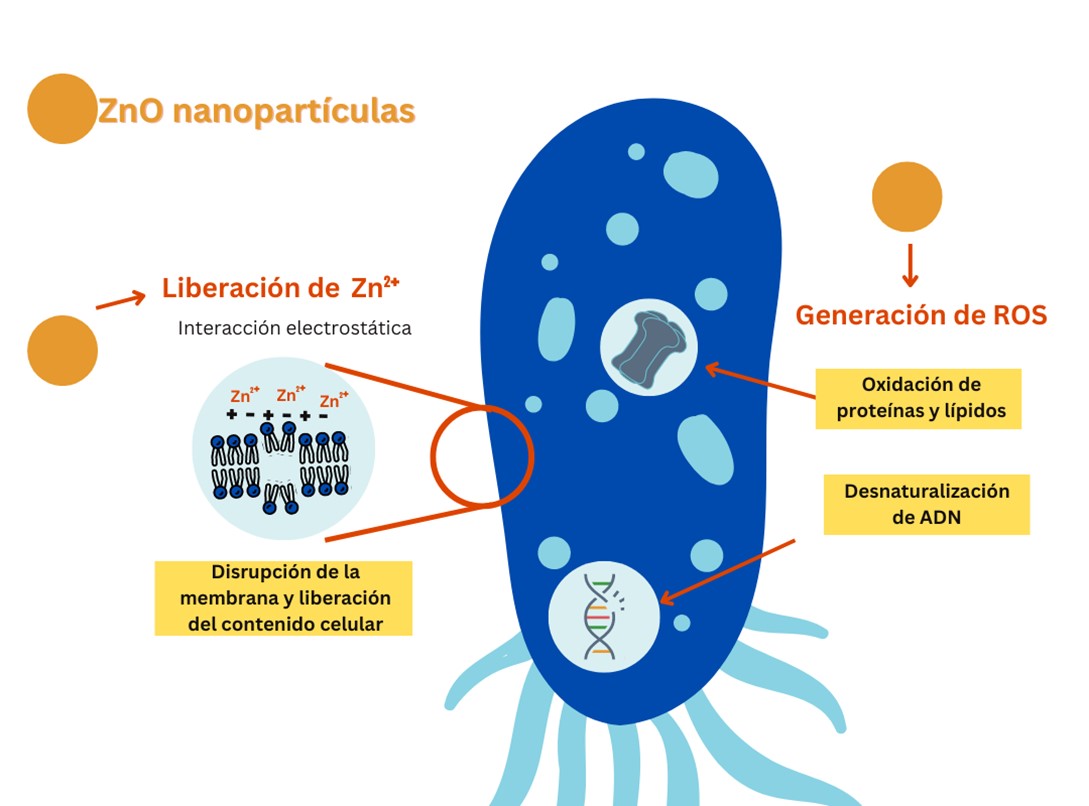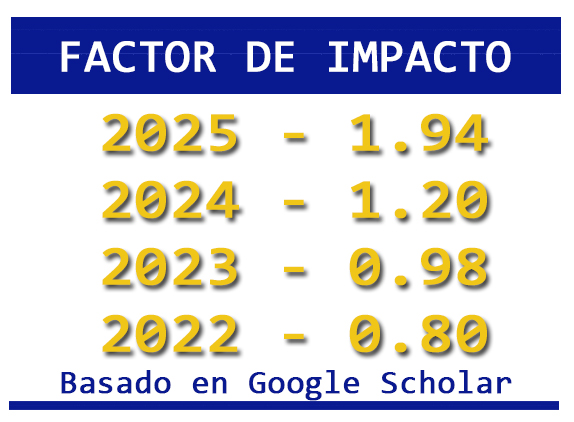Packaging with biopolymer films and antimicrobial nanoparticles for fresh-cut fruits
DOI:
https://doi.org/10.36790/epistemus.v18i37.388Keywords:
active packaging, nanocomposites, biodegradable polymersAbstract
Fresh-cut fruits, valued for their convenience and nutrients, face significant challenges such as rapid deterioration and microbial contamination after minimal processing. A promising solution to these issues is active packaging that utilizes biopolymeric films and coatings such as chitosan, starch, alginate, among others. These coatings are not only edible, safe, and sustainable but also incorporate nanotechnology through antimicrobial metallic nanoparticles. This improves the mechanical and barrier properties of the polymers and offers effective protection against pathogens. This article discusses how the combination of natural biopolymers with antimicrobial nanoparticles is transforming the edible packaging sector, opening new possibilities for preserving the freshness and safety of cut fruits.
Downloads
References
G. Singla, K. Chaturvedi y P. P. Sandhu, "Status and recent trends in fresh-cut fruits and vegetables," in Fresh-cut fruits and vegetables: Elsevier, 2020, pp. 17-49. DOI: https://doi.org/10.1016/B978-0-12-816184-5.00002-1
G. I. Balali, D. D. Yar, V. G. Afua Dela y P. Adjei-Kusi, "Microbial contamination, an increasing threat to the consumption of fresh fruits and vegetables in today’s world," International Journal of Microbiology, vol. 2020, 2020. DOI: https://doi.org/10.1155/2020/3029295. DOI: https://doi.org/10.1155/2020/3029295
G. Liguori, et al., "Effect of mucilage-based edible coating enriched with oregano essential oil on postharvest quality and sensorial attributes of fresh-cut loquat," Coatings, vol. 13, no. 8, pp. 1387, 2023. DOI: https://doi.org/10.3390/coatings13081387. DOI: https://doi.org/10.3390/coatings13081387
FDA. Draft guidance for industry: guide to minimize food safety hazards of fresh-cut produce. 2018. Disponible en: https://www.fda.gov/regulatory-information/search-fda-guidance-documents/draft-guidance-industry-guide-minimize-food-safety-hazards-fresh-cut-produce
R. D. Iturralde-García, et al., "Emerging technologies for prolonging fresh-cut fruits’ quality and safety during storage," Horticulturae, vol. 8, no. 8, pp. 731, 2022. DOI: https://doi.org/10.3390/horticulturae8080731. DOI: https://doi.org/10.3390/horticulturae8080731
W. Hu, Y. Guan, Y. Ji y X. Yang, "Effect of cutting styles on quality, antioxidant activity, membrane lipid peroxidation, and browning in fresh-cut potatoes," Food Bioscience, vol. 44, pp. 101435, 2021. DOI: https://doi.org/10.1016/j.fbio.2021.101435. DOI: https://doi.org/10.1016/j.fbio.2021.101435
M. C. Giannakourou and T. N. Tsironi, "Application of processing and packaging hurdles for fresh-cut fruits and vegetables preservation," Foods, vol. 10, no. 4, pp. 830, 2021. DOI: https://doi.org/10.3390/foods10040830. DOI: https://doi.org/10.3390/foods10040830
P. Zhao, J. P. Ndayambaje, X. Liu, and X. Xia, "Microbial spoilage of fruits: A review on causes and prevention methods," Food Reviews International, vol. 38, no. sup1, pp. 225-246, 2022. DOI: https://doi.org/10.1080/87559129.2020.1858859. DOI: https://doi.org/10.1080/87559129.2020.1858859
B. Yousuf, O. S. Qadri y A. K. Srivastava, "Recent developments in shelf-life extension of fresh-cut fruits and vegetables by application of different edible coatings: A review," LWT, vol. 89, pp. 198-209, 2018. DOI: https://doi.org/10.1016/j.lwt.2017.10.051. DOI: https://doi.org/10.1016/j.lwt.2017.10.051
R. J. Weisman, et al., "Estimating national exposures and potential bladder cancer cases associated with chlorination DBPs in US drinking water," Environmental Health Perspectives, vol. 130, no. 8, pp. 087002, 2022. DOI: https://doi.org/10.1289/EHP99. DOI: https://doi.org/10.1289/EHP9985
S. Bodbodak and Z. Rafiee, "Recent trends in active packaging in fruits and vegetables," in Eco-friendly technology for postharvest produce quality, M. W. Siddiqui, Ed. London: Elsevier, 2016, pp. 77-125. DOI: https://doi.org/10.1016/B978-0-12-804313-4.00003-7
L. K. Ncube, et al., "An overview of plastic waste generation and management in food packaging industries," Recycling, vol. 6, no. 1, pp. 12, 2021. DOI: https://doi.org/10.3390/recycling6010012. DOI: https://doi.org/10.3390/recycling6010012
J. R. Jambeck, et al., "Plastic waste inputs from land into the ocean," Science, vol. 347, no. 6223, pp. 768-771, 2015. DOI: DOI: 10.1126/science.126035. DOI: https://doi.org/10.1126/science.1260352
R. K. Deshmukh and K. K. Gaikwad, "Natural antimicrobial and antioxidant compounds for active food packaging applications," Biomass Conversion and Biorefinery, vol. 14, no. 4, pp. 4419-4440, 2024. DOI: https://doi.org/10.1007/s13399-022-02623-w. DOI: https://doi.org/10.1007/s13399-022-02623-w
M. Kostić, et al., "Edible coatings based on plant components for active packaging of fresh/fresh-cut fruits," South African Journal of Botany, vol. 161, pp. 395-403, 2023. DOI: https://doi.org/10.1016/j.sajb.2023.08.039. DOI: https://doi.org/10.1016/j.sajb.2023.08.039
F. Velázquez-Contreras, et al., "Cyclodextrins in polymer-based active food packaging: A fresh look at nontoxic, biodegradable, and sustainable technology trends," Polymers, vol. 14, no. 1, pp. 104, 2021. DOI: https://doi.org/10.3390/polym14010104. DOI: https://doi.org/10.3390/polym14010104
T. Janjarasskul and J. M. Krochta, "Edible packaging materials," Annual Review of Food Science and Technology, vol. 1, no. 1, pp. 415-448, 2010. DOI: https://doi.org/10.1146/annurev.food.080708.100836
E. Díaz-Montes and R. Castro-Muñoz, "Edible films and coatings as food-quality preservers: An overview," Foods vol. 10, no. 2, pp. 249, 2021. DOI: https://doi.org/10.3390/foods10020249. DOI: https://doi.org/10.3390/foods10020249
T. Senturk Parreidt, K. Müller y M. Schmid, "Alginate-based edible films and coatings for food packaging applications," Foods vol. 7, no. 10, pp. 170, 2018. DOI: https://doi.org/10.3390/foods7100170. DOI: https://doi.org/10.3390/foods7100170
L. Kumar, D. Ramakanth, K. Akhila y K. K. Gaikwad, "Edible films and coatings for food packaging applications: A review," Environmental Chemistry Letters, vol. 20, pp. 875–900, 2022. DOI: https://doi.org/10.1007/s10311-021-01339-z
H. M. Azeredo, C. G. Otoni y L. H. Mattoso, "Edible films and coatings–Not just packaging materials," Current Research in Food Science, vol. 5, pp. 1590-1595, 2022. DOI: https://doi.org/10.1016/j.crfs.2022.09.008. DOI: https://doi.org/10.1016/j.crfs.2022.09.008
P. Sharma, V. Shehin, N. Kaur y P. Vyas, "Application of edible coatings on fresh and minimally processed vegetables: a review," International Journal of Vegetable Science, vol. 25, no. 3, pp. 295-314, 2019. DOI: https://doi.org/10.1080/19315260.2018.1510863. DOI: https://doi.org/10.1080/19315260.2018.1510863
J. Ju, et al., "Application of edible coating with essential oil in food preservation," Critical Reviews in Food Science and Nutrition, vol. 59, no. 15, pp. 2467-2480, 2019. DOI: https://doi.org/10.1080/10408398.2018.1456402. DOI: https://doi.org/10.1080/10408398.2018.1456402
N. Chausali, J. Saxena y R. Prasad, "Recent trends in nanotechnology applications of bio-based packaging," Journal of Agriculture and Food Research, vol. 7, pp. 100257, 2022. DOI: https://doi.org/10.1016/j.jafr.2021.100257. DOI: https://doi.org/10.1016/j.jafr.2021.100257
T. H. Shellhammer and J. M. Krochta, "Edible coatings and film barriers," in Lipid technologies and applications: Routledge, 2018, pp. 453-479. DOI: https://doi.org/10.1201/9780203748848-17
M. Hoque, et al., "Biopolymer-based edible films and coatings for food applications," in Food, Medical, and Environmental Applications of Polysaccharides, I. B. Kunal Pal, Preetam Sarkar, Arindam Bit, Doman Kim, Arfat Anis, Samarendra Maji, Ed.: Elsevier, 2021, pp. 81-107. DOI: https://doi.org/10.1016/B978-0-12-819239-9.00013-0
S. Kumar, et al., "Biodegradable hybrid nanocomposite of chitosan/gelatin and green synthesized zinc oxide nanoparticles for food packaging," Foods vol. 9, no. 9, pp. 1143, 2020. DOI: https://doi.org/10.3390/foods9091143. DOI: https://doi.org/10.3390/foods9091143
Y.-S. Shyu, G.-W. Chen, S.-C. Chiang y W.-C. Sung, "Effect of chitosan and fish gelatin coatings on preventing the deterioration and preserving the quality of fresh-cut apples," Molecules, vol. 24, no. 10, pp. 2008, 2019. DOI: https://doi.org/10.3390/molecules24102008
P. J. Espitia and C. G. Otoni, "Nanotechnology and edible films for food packaging applications," in Bio-based Materials for Food Packaging, S. Ahmed, Ed. Singapore: Springer, 2018, pp. 125-145. DOI: https://doi.org/10.1007/978-981-13-1909-9_6
A. Ashfaq, et al., "Application of nanotechnology in food packaging: Pros and Cons," Journal of Agriculture and Food Research, vol. 7, pp. 100270, 2022. DOI: https://doi.org/10.1016/j.jafr.2022.100270. DOI: https://doi.org/10.1016/j.jafr.2022.100270
B. Kuswandi, "Nanotechnology in food packaging," in Nanoscience in Food and Agriculture, N. D. Shivendu Ranjan, Eric Lichtfouse, Ed. Switzerland Springer, 2016, pp. 151-183. DOI: https://doi.org/10.1007/978-3-319-39303-2_6
K. Kraśniewska, S. Galus y M. Gniewosz, "Biopolymers-based materials containing silver nanoparticles as active packaging for food applications–a review," International Journal of Molecular Sciences, vol. 21, no. 3, pp. 698, 2020. DOI: https://doi.org/10.3390/ijms21030698
W. Zhang, et al., "High performance biopolymeric packaging films containing zinc oxide nanoparticles for fresh food preservation: A review," International Journal of Biological Macromolecules, vol. 230, pp. 123188, 2023. DOI: https://doi.org/10.1016/j.ijbiomac.2023.123188. DOI: https://doi.org/10.1016/j.ijbiomac.2023.123188
M. A. Sani, et al., "Titanium dioxide nanoparticles as multifunctional surface-active materials for smart/active nanocomposite packaging films," Advances in Colloid and Interface Science, vol. 300, pp. 102593, 2022. DOI: https://doi.org/10.1016/j.cis.2021.102593. DOI: https://doi.org/10.1016/j.cis.2021.102593
H. Onyeaka, P. Passaretti, T. Miri y Z. T. Al-Sharify, "The safety of nanomaterials in food production and packaging," Current Research in Food Science, vol. 5, pp. 763-774, 2022. DOI: https://doi.org/10.1016/j.crfs.2022.04.005
H. Ahari, A. A. Anvar, M. Ataee y M. Naeimabadi, "Employing nanosilver, nanocopper, and nanoclays in food packaging production: A systematic review," Coatings, vol. 11, no. 5, pp. 509, 2021. DOI: https://doi.org/10.3390/coatings11050509
A. Ahmadi, P. Ahmadi y A. Ehsani, "Development of an active packaging system containing zinc oxide nanoparticles for the extension of chicken fillet shelf life," Food Science and Nutrition, vol. 8, no. 10, pp. 5461-5473, 2020. DOI: https://doi.org/10.1002/fsn3.1812
G. Ortiz-Duarte, L. E. Pérez-Cabrera, F. Artés-Hernández y G. B. Martínez-Hernández, "Ag-chitosan nanocomposites in edible coatings affect the quality of fresh-cut melon," Postharvest Biology and Technology, vol. 147, pp. 174-184, 2019. DOI: https://doi.org/10.1016/j.postharvbio.2018.09.021. DOI: https://doi.org/10.1016/j.postharvbio.2018.09.021
A. C. Flôr Vieira, et al., "Active coatings based on hydroxypropyl methylcellulose and silver nanoparticles to extend the papaya (Carica papaya L.) shelf life," International Journal of Biological Macromolecules, vol. 164, pp. 489-498, 2020. DOI: https://doi.org/10.1016/j.ijbiomac.2020.07.130. DOI: https://doi.org/10.1016/j.ijbiomac.2020.07.130
M. Lavinia, S. Hibaturrahman, H. Harinata y A. A. Wardana, "Antimicrobial activity and application of nanocomposite coating from chitosan and ZnO nanoparticle to inhibit microbial growth on fresh-cut papaya," Food Research, vol. 4, no. 2, pp. 307-311, 2020. DOI: https://doi.org/10.26656/fr.2017.4(2).255 DOI: https://doi.org/10.26656/fr.2017.4(2).255
K. Dulta, et al., "Development of alginate-chitosan based coating enriched with ZnO nanoparticles for increasing the shelf life of orange fruits (Citrus sinensis L.)," Journal of Polymers and the Environment, vol. 30, no. 8, pp. 3293-3306, 2022. DOI: https://doi.org/10.1007/s10924-022-02411-7. DOI: https://doi.org/10.1007/s10924-022-02411-7
A. Emamifar and S. Bavaisi, "Nanocomposite coating based on sodium alginate and nano-ZnO for extending the storage life of fresh strawberries (Fragaria× ananassa Duch.)," Journal of Food Measurement and Characterization, vol. 14, no. 2, pp. 1012-1024, 2020. DOI: https://doi.org/10.1007/s11694-019-00350-x. DOI: https://doi.org/10.1007/s11694-019-00350-x

Downloads
Published
How to Cite
Issue
Section
License
Copyright (c) 2025 EPISTEMUS

This work is licensed under a Creative Commons Attribution-NonCommercial-ShareAlike 4.0 International License.
The magazine acquires the patrimonial rights of the articles only for diffusion without any purpose of profit, without diminishing the own rights of authorship.
The authors are the legitimate owners of the intellectual property rights of their respective articles, and in such quality, by sending their texts they express their desire to collaborate with the Epistemus Magazine, published biannually by the University of Sonora.
Therefore, freely, voluntarily and free of charge, once accepted the article for publication, they give their rights to the University of Sonora for the University of Sonora to edit, publish, distribute and make available through intranets, Internet or CD said work, without any limitation of form or time, as long as it is non-profit and with the express obligation to respect and mention the credit that corresponds to the authors in any use that is made of it.
It is understood that this authorization is not an assignment or transmission of any of your economic rights in favor of the said institution. The University of Sonora guarantees the right to reproduce the contribution by any means in which you are the author, subject to the credit being granted corresponding to the original publication of the contribution in Epistemus.
Unless otherwise indicated, all the contents of the electronic edition are distributed under a license for use and Creative Commons — Attribution-NonCommercial-ShareAlike 4.0 International — (CC BY-NC-SA 4.0) You can consult here the informative version and the legal text of the license. This circumstance must be expressly stated in this way when necessary.
The names and email addresses entered in this journal will be used exclusively for the purposes established in it and will not be provided to third parties or for their use for other purposes.














